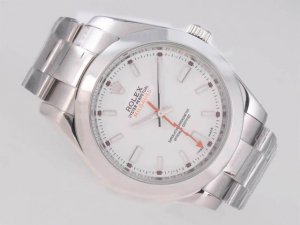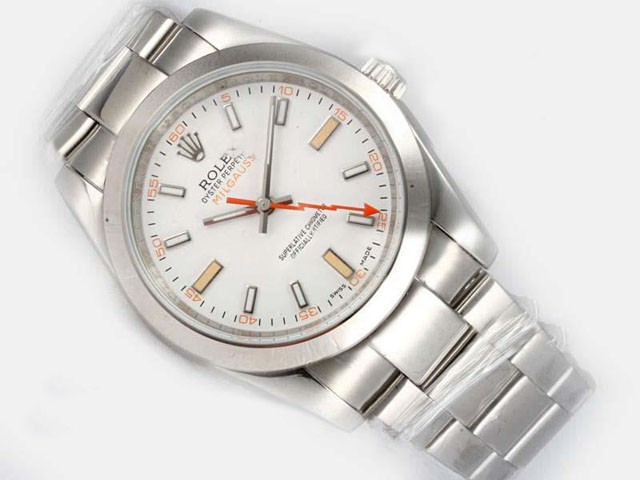Rolex Milgauss and Its Green Sapphire Crystal
The green-tinted sapphire crystal fitted to the reference 116400GV Milgauss has quickly become one of the typical features of Rolex’s anti-magnetic line of watches. The Rolex Milgauss was first introduced in 1956; however, it was not until 2007 that it received its now-signature, green sapphire crystal – a unique feature that was originally introduced as a way for replica Rolex to celebrate the 50th anniversary of their Milgauss line.
No other watch in Rolex’s current catalog has a green sapphire crystal. However, all currently in production Milgauss watches come out with green sapphire crystals. Light green is not a simple layer or coating, but exists in the whole crystal material, will not fade or discolor after a long time of wear and use.
Rolex states that it took them many years of research and development to master and perfect the secret procedure of manufacturing their green-tinted sapphire crystals and that the actual process of producing the crystals takes several weeks. What is most interesting is that despite a usual eagerness to patent their various in-house technologies, Rolex claims that the green sapphire crystal in the Milgauss is “not patented, as it is so hard to make that no one else would even venture to try.” 
Synthetic sapphire is produced by a variety of methods, generally divided into melt growth method, solution growth method, and high-temperature and high-pressure growth method. It is hypothesized that Rolex uses a hydrothermal method of production for its synthetic sapphire crystals, which is slow, expensive, and uses heat and pressure to imitate the conditions present deep inside the earth that is responsible for the production of naturally-occurring crystalline gemstones.
The synthetic green sapphire’s chemical composition includes copper and alumina, the final element in its signature green hue. The process of synthetic sapphire production is an expensive and exacting one; however, the extra obstacles that accompany the addition of copper – and the precision required to achieve the right amount of green tint without compromising the strength or clarity of the crystal are possibly responsible for its exclusive use on the Rolex Milgauss line of watches.
Particles attract to one another, forming layers that fuse together to create a dense and ultra-hard substance. Owing to the high costs of production, most watch crystal manufacturers cut their synthetic sapphire boules in a perpendicular fashion, to maximize the number of crystals that can be created from a single boule. Even though this is completely unconfirmed, it is rumored that Rolex cuts the boule along a diagonal axis to maximize the clarity and strength of the finished crystal. Apart from complicating the cutting and shaping process itself, cutting the boule along a diagonal axis significantly raises the amount of waste, which further adds cost to an already expensive manufacturing process.


